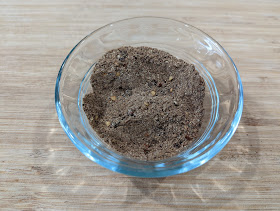For as long as there have been organized societies on this planet, there has been a spice trade. For most people, that trade is associated with the "silk road," which connected the Far East (principally China) with the rest of Asia, Europe and Africa. The silk road began around in the third century, B.C.E and continued until the Ottoman Empire effectively shut it down in 1453. What may be less known is the network of "silk roads" that date back to 2,000 B.C.E. This network facilitated the trade in, among other things, cinnamon from Ceylon (now, Sri Lanka), and cassia from China. These routes also gave rise to the trade in cloves and nutmeg from the "spice islands" (later conglomerated into what became Indonesia).
Other roads - or more appropriately, voyages - added to the spice trade by introducing ingredients from the "New World." These ingredients included allspice from Xaymaca (now Jamaica), along with chiles and vanilla from Anahuac (the Nahuatl name for what is now known as Mexico).
In sum, the spice trade introduced a wide range of new ingredients -- black pepper, cardamom, cassia, chiles, cinnamon, cloves, cumin, ginger, mace, nutmeg, saffron, star anise, and turmeric -- to cooks around the world. Cooks from around the world began incorporating these spices into mixes, adding new spices as they became available. These spice mixes include Berbere in the Horn of Africa, the masalas of the subcontinent, and Baharat in the Middle East.
European cooks in the 15th century began to categorize (loosely) those mixes. They fell into three categories: powder blanche, powder deuce (sweet) and powder fort (strong). The mixes eventually were lumped together into one common term, "kitchen pepper."
The story of kitchen pepper is not a uniquely European. The reason is that other voices have contributed to the narrative. These voices include the enslaved Africans, who worked in the kitchens on plantations in the New World and elsewhere in colonies across the globe. For example, Hercules Posey, the enslaved African who served as the cook (really, the chef) for George Washington, is believed to have used a kitchen pepper mix that featured nutmeg. James Hemmings, the enslaved cook (again, chef) for Thomas Jefferson is thought to have used a mix heavily studded with black pepper. And, then there was Polly Haine, who may have used allspice as part of her kitchen pepper spice mix. Polly Haine went on to use that mix to create her Caribbean Pepper Pot soup, which she sold on the streets of Philadelphia in the late 18th century. Each of these examples underscores the primary characteristic of kitchen pepper: everyone has their own individual mix. All of those mixes that give rise to the story.
 |
| Michael Twitty |
If I had to summarize kitchen pepper, then I would do so in the following way: kitchen pepper is about the artistry of an untold number of individual, enslaved cooks, each of whom crafted his or her own spice mix. It is about an unspoken effort to assert one's individuality while subjugated in a brutal, dehumanizing system that was intended to deny that right and freedom to that individual.
KITCHEN PEPPER
Recipe by Michael Twitty, available at Bittman Project
or Michael Twitty, The Cooking Gene, pg. 24
Ingredients:
- 2 tablespoons coarsely ground black pepper
- 1 tablespoon freshly grated nutmeg
- 1 tablespoon ground allspice
- 1 tablespoon ground cinnamon
- 1 tablespoon ground ginger
- 1 tablespoon ground mace
- 1 tablespoon ground white pepper
- 1 tablespoon ground red pepper flakes



No comments:
Post a Comment